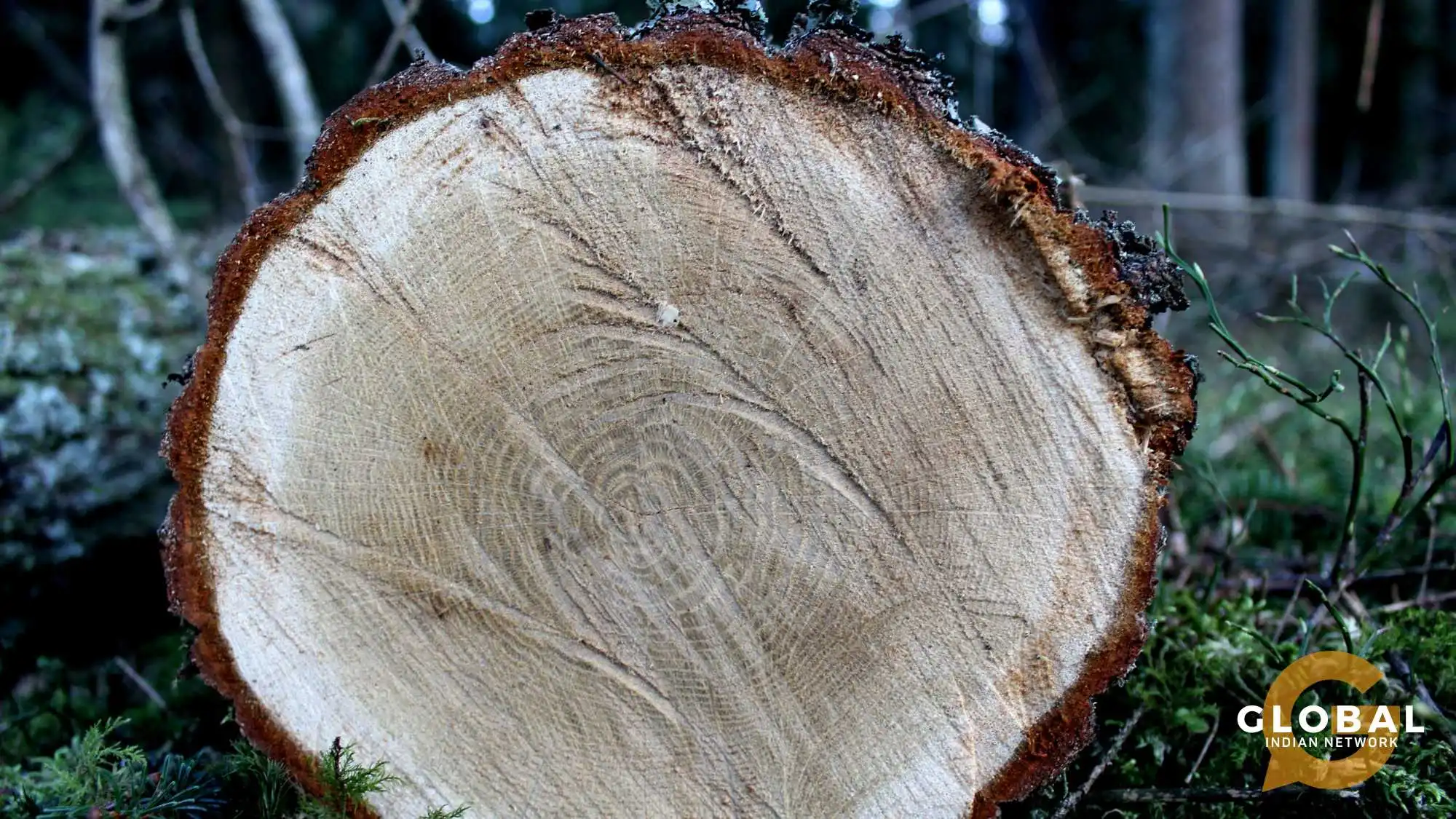Slovenia views wood as a strategic raw material, focusing on its wood processing industry as a vital economic sector with promising prospects. The industry played a significant role in Slovenia's economy before independence and continues to thrive today. Slovenia's approach to enhancing the entire forest and woodworking chain demonstrates its commitment to maximising its potential.
There is much to learn about Slovenia’s wood industry. Let us dive in.
Listen To This Podcast: Is Slovenia the Emerging Logistics Goldmine in 2024? Insights from Natasa Pogacnik
Table of Contents
Overview
The Slovenian wood industry increased due to a rise in fuel prices and climate change concerns. The Slovenian wood-processing industry is thriving, with an upward trend in sawn wood production. The industry is promoting the responsible use of forests and increasing the commercial use of roundwood. Potential for increased production remains, fulfilling the sector's vision of processing maximum wood in Slovenia.
Climate Change Performance Index (CCPI)
Slovenia ranks 41st in CCPI, with low climate policy and energy use performance and medium renewable energy performance despite forest fires and flooding.
Slovenia's national energy and climate plan is failing due to coal-fired power plants not closing until 2033 and continued fossil fuel subsidies. The country has a low share of renewable energy and faces challenges in obtaining permits for photovoltaic panels. Stronger policies on biofuels and public transport are needed. Slovenia's forestry sector focuses on climate change adaptation, while the agricultural sector has non-ambitious emissions reduction targets.
Resolution on Slovenia’s Long-Term Climate Strategy until 2050
Slovenia's strategy aims to achieve net-zero greenhouse gas emissions by 2050, focusing on renewable energy transition, efficiency improvement, and phasing out fossil fuels. It also promotes electric vehicles, sustainable transport, industrial modernisation, sustainable agriculture, forestry practices, and a circular economy transition.
The strategy emphasises climate change adaptation, infrastructure resilience, low-carbon technologies, sustainable infrastructure, and climate-resilient solutions. It promotes green growth and job creation and calls for international cooperation, including participation in the Paris Agreement and the European Union's climate policies.
A threat to social, environmental, and economic systems, climate change is characterised by rising temperatures, altered precipitation patterns, and extreme weather events. It may also result in a shortage of food and water.
Read This Article On: Slovenian Wood Industry: The Forest Story
Current Status
Slovenia is committed to progress with sustainability as the main principle. The parameters include:
Sustainable Development Goals (SDGs)
The Sustainable Development Goals (SDGs) are a set of 17 global goals established by the United Nations (UN) in 2015 to address various socio-economic and environmental challenges and create a more sustainable, equitable, and prosperous world by 2030. Slovenia's Industrial Strategy 2021-2030 focuses on Goals 8 and 9, promoting decent work and economic growth, reaffirming its commitment to the 2030 Agenda for Sustainable Development.
Greenhouse Gas Emissions and Temperature
By 2030, Slovenia hopes to reduce its greenhouse gas emissions by 10.6 million tonnes annually by implementing a range of policies, rules, and incentives that support sustainable practices in all spheres of the economy. Slovenia's temperature dropped from 10.55 degrees Celsius in 2020 to 9.90 degrees Celsius in 2021. From 1901 to 2021, Slovenia's average temperature was 8.85 degrees Celsius.
Slovenia’s Strategy for Mitigating Climate Change
The strategy to align with SDG 13, followed by Slovenia, is multi-pronged.
- The National Energy and Climate Plan 2030 aims to reduce greenhouse gas emissions by 36%, improve energy efficiency by 35%, increase renewable energy resources by 27%, and invest in research and development.
- Slovenia is boosting renewable energy, accounting for over 20% of its total energy consumption, through policies like feed-in tariffs, tax incentives, and subsidies.
- Slovenia is promoting sustainable land use practices, such as forestry management, natural habitat protection, and sustainable agriculture, to reduce greenhouse gas emissions, enhance carbon sequestration, and conserve biodiversity.
- Slovenia is implementing climate change adaptation strategies and reducing the vulnerability of critical infrastructure and ecosystems to mitigate its impacts.
- Slovenia actively participates in international climate change efforts, including UNFCCC and the Paris Agreement, and collaborates with other countries and organisations to share best practices and promote global action.
Slovenia's National Energy and Climate Plan 2030 and Slovenian Industrial strategy aim to increase renewable energy use, strengthen energy infrastructure, reduce air pollution, transition to a circular economy, and support social entrepreneurship. The plan also aims to limit potential effects on regions and sectors most impacted by the transition.
Slovenia should harness its domestic renewable resources for sustainable development, ensuring uninterrupted raw material supply and mitigating climate change. Increased environmental awareness and research for alternative fossil fuels can reduce long-term negative effects on living space.
Agriculture and Forestry to Tackle Climate Change
Slovenia has been developing a strategy for adapting its agriculture and forestry sectors to the impacts of climate change. The strategy emphasises climate-resilient agricultural practices, including drought-tolerant crop varieties, improved water management, and sustainable soil conservation. It also emphasises conserving biodiversity to enhance ecosystem resilience and species adaptation.
The forestry strategy promotes sustainable management, mixed-species forests, adaptive silvicultural techniques, and pest and disease mitigation. The strategy also encourages the adoption of innovative technologies in agriculture and forestry. The strategy aims to improve climate change adaptation capacity among farmers, foresters, and other stakeholders through knowledge transfer, training, and best practices dissemination while monitoring and evaluating adaptation effectiveness based on scientific knowledge and climate projections.
Read This Article On: Slovenian Wood Industry: Sustainable Forest Management
Sustainable Management of Forest Cover in Slovenia
Sustainable forest management in Slovenia is crucial for preserving valuable resources, with ecological, social, and economic goals determining the ideal forest cover. A minimum of 50% is generally advised.
Slovenia's plan aims to improve tree age, prevent deforestation, reduce forest fire risks, strengthen climate solutions, establish nurseries, ensure wood quality, convert spruce monocultures, conserve aquatic biotopes, and provide suitable planting material through sustainable wood harvesting and natural regeneration.
Forest management strategies aim to mitigate climate change by using wood as a low-carbon, renewable resource, improving resilience, and carbon sequestration. Collaboration with stakeholders is crucial. Forest cover varies based on type and location, with higher coverage needed in areas with frequent disturbances.
Future Outlook
The natural asset that Slovenia is blessed with is to be taken care of and utilised the right way. The future looks promising if some conditionalities are met. They include:
Insufficient Felling in Privately Owned Forests
Slovenia faces a significant challenge in utilising its vast raw wood resources due to the fragmentary nature of private forest estates and the shift in ownership structure since 1996. The Ministry of Agriculture, Forestry and Food emphasises the importance of this information for the wood-processing industry's development, enabling the identification of suitable processing areas, optimisation of existing facilities, capacity determination, supply security, and appropriate technologies.
The underused Potential of Deciduous and Coniferous Trees
Slovenia's Ministry of Agriculture, Forestry and Food is advocating for increased commercial use of roundwood despite 60% of the country's forests being used for energy. They believe this will address insufficient felling in privately owned forests and maximise the value of deciduous wood. Despite challenges in maintaining responsible forest and wood use, roundwood production increased by 56% after the 2014 ice storm.
Coniferous wood, known for its durability and unique properties, is used in construction, paper and pulp industries, musical instruments, furniture manufacturing, and kindling. Pine and spruce are commonly used for framing, decking, and structural components. Spruce is particularly popular for crafting acoustic guitars and violins due to its resonant qualities. Furniture production also benefits from certain coniferous species, offering a balance of strength and workability.
The Ownership Structure of Forests and Its Impact on Wood Production
Slovenia's forest ownership has shifted since 1996, with state-owned forests decreasing by 130,000 hectares and privately owned forests increasing by nearly 190,000 hectares. The Forest Service is cutting all wood in state-owned forests to increase privately owned forest production. The ministry encourages smaller forest owners to enter the market or collaborate on forest works.
Read This Article On: Slovenian Wood Industry: Sustainable Business Prospects
Emphasis on the Need for Responsible Wood Consumption and Sustainable Forest Management
The Slovenian Ministry of Agriculture, Forestry and Food emphasises responsible wood consumption and sustainable forest management due to fragmented private forest estates. They call for efficient processing facilities, capacity determination, supply security, and new technologies for deciduous wood, primarily used for energy, and encourage smaller forest owners to enter the market. Challenges arise from fragmented ownership structures and underutilisation of deciduous trees. Wood is expected to play a crucial role in the green transition, as it binds carbon dioxide.
Efforts to Promote the Use of Wood in Construction
Slovenia's wood industry is promoting its use in construction, with the Ministry of Agriculture, Forestry and Food emphasising rational wood consumption. The Wood Industry Directorate and SPIRIT Slovenija agency are also actively promoting Slovenian wood use.
The Smart Buildings, Homes, and Wood Chain Strategic Research and Innovation Partnership (SRIP) is promoting Slovenian wood in high-building construction, particularly apartment blocks and public buildings. Wood-processing companies are promoting high-quality wood for prefabricated wooden houses, with the potential for increased commercial use of roundwood. However, challenges arise from fragmented ownership structures and underutilisation of deciduous trees. Wood is expected to play a crucial role in the green transition, as it binds carbon dioxide.
Timber Logistics Centers in Slovenia
Slovenia is planning to introduce timber logistics centres as a strategic initiative to improve the external integration of its wood sector, particularly for smaller enterprises. These centres will optimise the storage, transportation, and distribution of timber products, streamlining the supply chain and making it more efficient. They will act as intermediaries between stakeholders, fostering connections between producers, manufacturers, and distributors. This will enhance the competitiveness and sustainability of Slovenia's wood sector, contributing to the economic growth of smaller enterprises.
Sustainability in Slovenia's Wood Industry
Slovenia's wood industry showcases a strong commitment to sustainability, evident through several key factors:
- Small manufacturing enterprises actively engage in sustainable practices within the wood industry, contributing to environmental responsibility and long-term viability.
- The industry employs sustainable production management models, emphasising responsible resource utilisation and minimising environmental impact.
- Slovenia integrates wood processing into its bio-economy, fostering sustainable and integrated development across value chains.
- Enterprises in the wood industry prioritise corporate sustainability, recognising the importance of environmentally conscious practices for long-term economic performance.
These collective efforts underscore the industry's dedication to sustainable practices, ensuring the responsible management of resources and promoting a harmonious balance between economic growth and environmental preservation.
Significance of the Wood Industry
Slovenia's wood industry has shown growth potential, with opportunities to increase production and processing. However, challenges include fragmented ownership structures, underutilisation of deciduous trees, and a need to increase commercial use of roundwood. Slovenia's forests are vital for biodiversity, water management, and tourism. They provide habitat for diverse plant and animal life, regulate water flow, and offer numerous outdoor activities, contributing significantly to the country's tourism industry.
You Might Be Interested In: Slovenian Economic Recovery: Post-COVID Challenges and Reforms
Conclusion
Slovenia's wood industry research highlights the importance of sustainable wood harvesting and the use of wood products to mitigate climate change impacts. The study presented here demonstrates the potential for climate action and greenhouse gas reduction within international agreements like the Paris Agreement and the EU Fit for 55 Green Transition Plan.
Slovenia's wood industry has undergone significant changes since 1996, focusing on climate mitigation through shifts in forest ownership and sustainable wood utilisation. This has presented both opportunities and challenges, necessitating a delicate balance between resource utilisation and environmental conservation.
Slovenia's wood industry is pivotal in promoting sustainable development, and further research, policy support, and industry collaboration are crucial for maximising its positive impact on climate mitigation efforts. It is time to replace the unmindful B2B (business to business) with the mindful B2B (back to basics).











[…] between India and Slovenia in the pharmaceutical sector presents both opportunities and challenges. Let's delve into the […]
[…] reminders and be consistent: Combatting climate change and protecting our vital ecosystems is no easy task! Use technology to keep yourself […]
[…] UI program in Grenada aims to reduce climate change vulnerability, job and income losses, and worker income protection. It also aims to improve […]